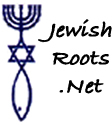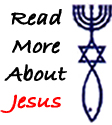






![]()
 During the Feast of Tabernacles (Sukkot) there was
a great ceremony called the "Illumination of the Temple," which involved the
ritual lighting of four golden oil-fed lamps in the Court of Women. These lamps
were huge menorahs/candelabras (seventy-five feet high) lighted in the Temple at night
to remind the people of the pillar of fire that had guided Israel in their
wilderness journey. All night long the light shone their brilliance, it is said,
illuminating the entire city.
During the Feast of Tabernacles (Sukkot) there was
a great ceremony called the "Illumination of the Temple," which involved the
ritual lighting of four golden oil-fed lamps in the Court of Women. These lamps
were huge menorahs/candelabras (seventy-five feet high) lighted in the Temple at night
to remind the people of the pillar of fire that had guided Israel in their
wilderness journey. All night long the light shone their brilliance, it is said,
illuminating the entire city.
In celebration and anticipation, the holiest of Israel's men danced and sang psalms of joy and praise, before the Lord. This festival was a reminder that God had promised to send a light, the Light, to a sin-darkened world. God promised to send the Messiah to renew Israel's glory, release them from bondage, and restore their joy. Imagine that you are in ancient Jerusalem during the Feast of Tabernacles. Visualize seeing these massive menorahs giving a tremendous amount of light. Now imagine the impact of the words said by Jesus in the Temple courtyard when he announced, "I am the Light of the world."
![]() Jesus is the Light, the source of illumination to bring the
lost out of darkness. Jesus declared himself to be the Light of the world. It is
not clear from the text when this incident happened, but it was some time
between the Feast of Tabernacles and the Feast Of Dedication (Hanukkah); both of
these celebrations focused on light.(1)
Jesus is the Light, the source of illumination to bring the
lost out of darkness. Jesus declared himself to be the Light of the world. It is
not clear from the text when this incident happened, but it was some time
between the Feast of Tabernacles and the Feast Of Dedication (Hanukkah); both of
these celebrations focused on light.(1)
"When Jesus spoke again to the people, he said, "I am the light of the world. Whoever follows me will never walk in darkness, but will have the light of life" (John 8:12).
During this ceremony the priests and Levite's would use their own worn out clothing for wicks. Some believed that the light represented God's Shekinah glory that once filled the temple.(2)
Read more about the Feast Of Tabernacles
1). This information was used by permission from a ministry known as Heart of Wisdom.
2). The Fall Feasts of Israel by Mitch and Zhava Galser.